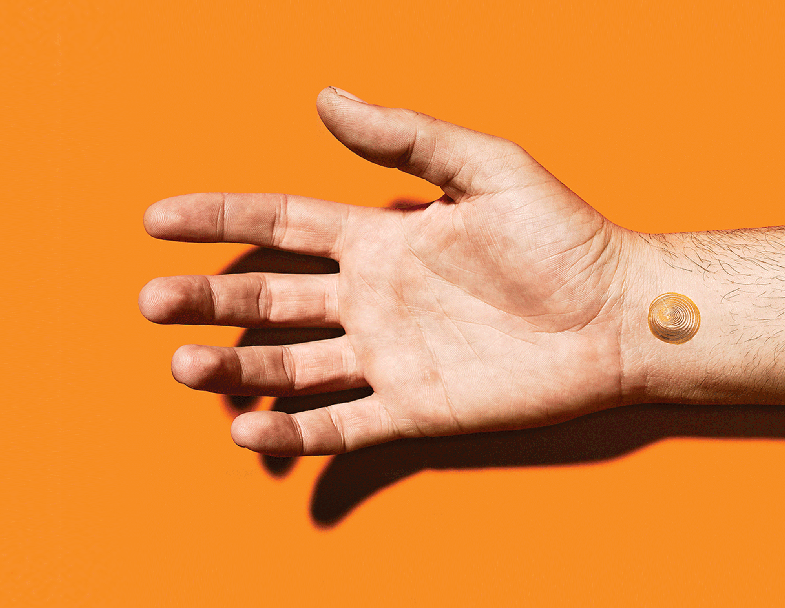Rise Of The (Nearly) Invisible Wearable
Tiny, stick-on computers could put fitness trackers to shame

We may earn revenue from the products available on this page and participate in affiliate programs. Learn more ›
Tattoos say a lot about a person. They’re about to communicate a lot more. A new wave of ultrathin, flexible stick-on sensors are entering the wearables game, promising to improve our lives with (even more) data.
For now adhesive mini computers are mostly in the “look-how-cool-it-is” phase. Google released a digital tattoo last summer that uses near-field communication (NFC) to unlock a Motorola Moto X smartphone. That’s fun. But that’s all it does. Other companies are jamming sensors and antennas into these nano-thin waterproof devices that could potentially save lives. The wider promise of digital tattoos will come with health and fitness trackers. The SEEQ Mobile Cardiac Telemetry System, created by Medtronic, sticks onto a cardiac outpatient’s chest and sends continuous heartbeat information to a medical monitoring service. The staff there can then analyze and send that data to a physician.
MC10, a company that specializes in stretchable electronics, will release the BioStamp system, which tracks heart rate, body movement, temperature, and other biometric data so people can monitor their own health at home. These sensors will provide real-time information for days on end—meaning smartwatches and wristbands might soon be a thing of the past.
This article was originally published in the July 2015 issue of Popular Science, under the title “Rise of the (Nearly) Invisible Wearable.”